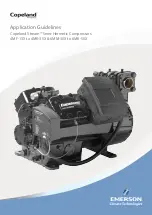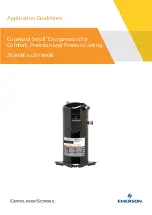
BSS Audio
DPR-402 User Manual v3.0
Page 7
discussed, the operator would reach over and turn down the volume if signal levels
were approaching distortion. At this point he now has an option: Either reduce the
level so that there is nothing exceeding his desired maximum level, or reduce the
level by a small amount so that his output is slightly greater than that of his
preferred maximum but not as loud as it would have been if no action had been
taken. This action is known as the ratio. A ratio of 1:1 indicates that the output will
linearly track the input level of the threshold. i.e. For every 1dB of input over the
threshold point, there will be 1dB of output. A ratio of 2:1 indicates that for every
2dB of input level above the threshold, there will be a corresponding increase of
1dB in the output level. A ratio of 10:1 indicates that for every increase of 10dB of
input level, there will be a corresponding increase of 1dB in the output level, and
so on. A ratio of infinity:1 indicates that no matter how loud the input signal goes
above the threshold, the output will remain constant at the threshold point. It is
worth noting that a hard or infinite ratio limit has applications in some specialised
situations, but in general it is neither appropriate nor necessary, and is likely to
cause noticeable side effects in the sound.
3 De-essing and Peak Limiting
A common problem encountered when amplifying the human voice is the large
amount of High Frequency energy, heard as the sibilant 'sss' sound. These high
frequency or sibilant sounds can reach levels considerably greater than the normal
voice level, and will result in signal break-up or distortion. It is possible to control
these sounds independently of the normal program by making the normal
compressor sensitive only to these high frequencies. Selective high frequency
compression is generally called de-essing, as it removes the 'sss' content from the
program.
Referring to section 2.2; Attack, Release and Ratio
, attack time was defined as the
time taken for the compressor to respond to program levels which have exceeded
its threshold level. It is also found that for relatively low frequencies a longer attack
time is required than for high frequencies, to avoid any unpleasant dynamic
distortions. When compressing a program mix that includes a wide range of
frequencies, some compromise must be made to the setting of the attack time, and
this will inevitably result in a setting that suits the lowest frequency components
present. For general dynamic range controlling using a compression mode, this is
of no serious consequence. However, in a limiting mode, where the peaks of the
signal are being restricted to a maximum operating level to avoid distortions in
following equipment, it is essential to have the attack times as fast as possible for
all frequency components. Operating the compressor in a limiting mode, with a
high ratio, high threshold and dynamic settings to suit the low frequency
components, will result in very fast high frequency signal transients passing
through without causing gain reduction. These transients can then cause distortions
in following equipment, such as tape recorders and radio transmitters.








































